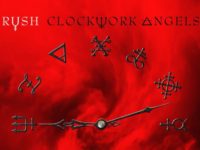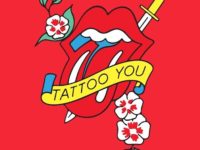So, what do you say about an album that is celebrating the 40th anniversary of its release that hasn’t already been said? Well, here’s one thing that has probably never been stated in print by anyone: I first heard Rush’s 2112 in Moose Jaw, Saskatchewan.
Before all of you start shooting your diet soda pop out your collective noses, let me tell you about growing up in the city infamously named after a silly animal body part. When it came to hard rock in the 70s, Moose Jaw was ahead of the curve compared to the rest of the world. Most kids there listened to bands such as AC/DC and Van Halen long before they became megastars everywhere else. And even mid-level industry workhorses like Nazareth and Foghat successfully lodged their platters in plastic milk crates that housed the best-selling releases by Deep Purple, Zeppelin, Sabbath and Aerosmith.
Unfortunately, back in those days Canadian concert tours by major acts often consisted of one stop in the east (Toronto) and one on the west coast (Vancouver), skipping most places in between – especially the underpopulated rectangle known as the province of Saskatchewan. Why? Look at it this way: the story reportedly told by the local driver for Blue Oyster Cult, who (perhaps accidentally?) played in Regina around the time “(Don’t Fear) The Reaper” hit the Top 40 was that after the show the band piled into the limo, called the provincial capital “the armpit of the universe” and promised they would never play there again.
Out in the flatlands, rock ‘n’ roll was a taste cultivated by listening to albums as opposed to attending live gigs. It’s also important to know that at this time the Canadian music industry was developing its own set of homegrown hard rock heroes as represented by April Wine, Bachman-Turner Overdrive and many more. In other words, despite what one might assume, there was plenty of music to hear in the rec rooms of the prairies.
Out of this hailstorm of hard rock fell 1974’s Rush, the self-titled debut from the Toronto power trio that dealt in the chunky riffs of guitarist Alex Lifeson and the piercing vocal delivery of bassist Geddy Lee. 1975 brought Neil Peart in as the new drummer and a more progressive feel to their musical approach, as made apparent on the Fly by Night album. They went even further on Caress of Steel, released later that same year.
It was quite apparent to friends in my circle that Rush was leaning more towards progressive rock than the sonic thud found on its debut release. And it’s not like we had a problem with prog rock, as evidenced by the presence of Jethro Tull and Yes albums in each of our collections. But they were mostly different camps in those days, and so rockers who tried to turn prog would have been considered as weird as if Emerson Lake and Palmer tried to sound like Kiss.
And that’s the significance of Rush’s 1976 album 2112, considered by many to be their first masterpiece. It successfully connected the aural blast of hard rock with the intricate musical arrangements and literate approach to songwriting characterized by progressive rock.
But it also meant that fans of the basic rock of their first album had to make a choice as to whether they were willing to follow the band as they continued to grow and change. Many fans were able to do so: Frankly, I wasn’t.
Part of the problem was that strong musicianship was starting to be associated with the likes of Steely Dan, the Doobie Brothers, Pink Floyd and all those aforementioned prog acts – which meant that by going prog, Rush was straying out of hard rock territory. And really, what was this “Temple of Syrinx” business? And robot voices saying, “We have assumed control?” And all those chord changes?
A friend loaned me 2112 and I gave it a play at least a couple of times, but it was too late: I had lost interest, preferring to puzzle over some disbanded, forgotten group I had discovered called the Stooges whose lead singer Iggy Pop covered himself with peanut butter and hurled himself into the audience. Now that was rock and roll.
So, really – though I eventually came to appreciate Rush’s commitment to their art and even enjoyed some of their later work, the fact is I haven’t sat through a complete listening of 2112 for four decades. No time like the present to acquaint myself with something I missed the first time ‘round.
First of all, the reissue sounds good to my ears – better than the 8-track I remember from back in the day, but I suppose that’s a given. And there’s no denying each player’s mastery over his instrument. Even Geddy Lee’s voice doesn’t sound as over-the-top as it once did to me. So far, so good.
Next, the lyrics. Surprisingly, the story is quite easy to follow. But wait a minute: Isn’t this a variation of Pete Townshend’s earlier abandoned Lifehouse project? But since the Who never released it as such, it isn’t a steal, so that’s OK. Apparently it does parallel Ayn Rand’s novel Anthem. I also felt some of the totalitarianism of George Orwell’s 1984 in the mix there too. Again, you can’t fault Rush for being literate. I still don’t dig that “Syrinx” stuff, though.
The ending is supposed to be intentionally ambiguous, but I don’t see it as such. To me, robot voices assuming control is always an unhappy ending. As well, Rush ought to also be given the credit (or blame) for inventing the first emo protagonist, who just can’t deal rationally with his broken guitar. I would think explicitly destroying the temple priests and finding a couple of old Telecasters or Strats would be the most obvious way to conclude this tale, but then the band would have been obliged to end on a Grateful Dead-style hippie jam, complete with bongo drums and tie-dye T shirts. So, let’s just be satisfied with it as it is.
Finally, there’s the rest of the album. Perpetually overshadowed by the major production on side one, the five songs that comprise side two turn out to be pretty good as well: much like side one without the story line providing continuity, and separated into more easily digestible three and four minute bites.
The 40th Anniversary Edition also comes with a second disc that contains Rush playing live renditions from the album. As well, there are a few cover versions of 2112 material as performed by Dave Grohl, Billy Talent and others. Kind of cool, but not really necessary.
In conclusion, I have to say that I’m kind of sorry I just couldn’t get into Rush’s 2112 when it first came out. My older and wiser self actually likes it. It’s interesting to note that the album’s anti-authoritarian message had similar parallels in the politicized songs and general attitude of ’70s punk rock artists like the Sex Pistols, the Clash or the Ramones, even if they didn’t share the same aesthetic.
And as far as a lot of those hard rock heavies I listened to in my youth: well, they just came and went, but Rush stuck to their guns, finding their own success and well-deserved longevity. Maybe I’ll have to go back and rediscover other gems in their back catalog. Any clues what this “Fountain of Lamneth” thing is about?
- How David Bowie’s ‘The Next Day’ Stripped Away All of the Artifice - March 15, 2023
- Why Deep Purple’s ‘Who Do We Think We Are?’ Deserves Another Listen - January 11, 2023
- In Defense of the Often-Overlooked Mott the Hoople - November 10, 2022




Passage to Bangkok is about marijuana, not a “jaunty ride”. Sheesh. Do you even Rush?